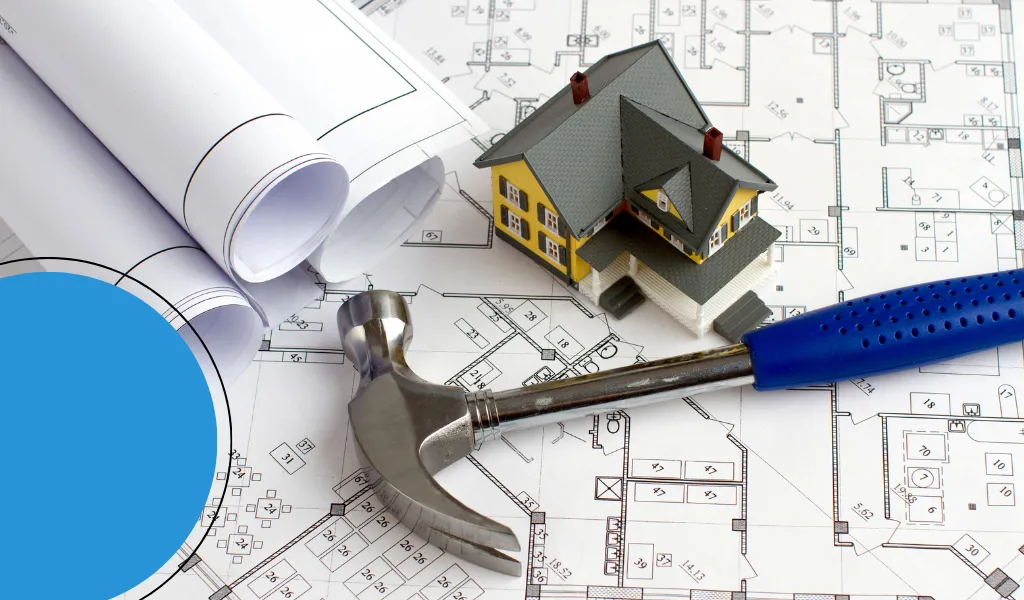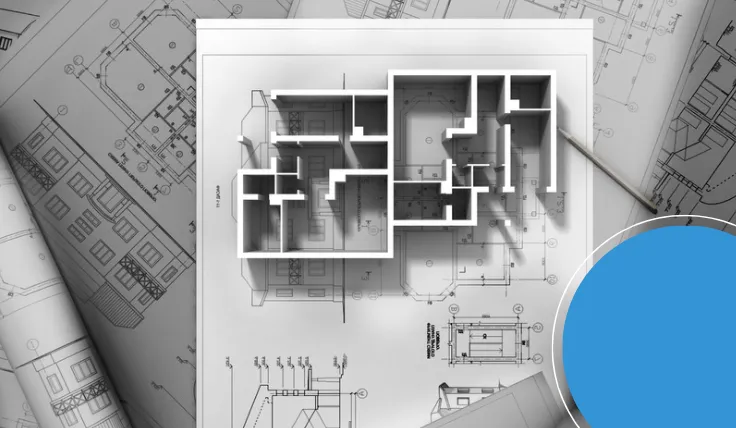The crucial stage of any self-build and extension is gaining a planning commission. When it comes to extending your house, building a new house, or building an office in the garden, you need planning permission. The primary objective of many of the people behind buying the property is to renovate and develop the property. At the same time, if your plan is small-scale extensions or outbuildings. You may avoid applying for permission if you build within the specified limits called Permitted Development. But the best option is that before putting in an offer, work out what you can and cannot do.
While some basic extensions and most internal works are allowed without planning permission (they are called permitted developments, however at the same time, there are far stricter rules governing homes as well as flats in listed buildings and conservation areas. For example, in a listed building, you may even need consent just to fit a new kitchen.
‘All properties can be renovated, but not necessarily in the way that you want,’ says McGivern at Mercury Homesearch. ‘Planning permission is never certain, so you should always check with building specialists, architects, or even the local authority before you put a bid in to get a sense of whether it’s likely to be granted or denied.
‘But the strict laws shouldn’t dissuade you from buying listed buildings or in conservation areas. You need just specialist advice to ensure what you want to do is possible. Because if you do alter something you’re not allowed to, you’ll only get yourself into trouble down the line – and you’ll struggle to sell that property unless you put things back to how they were.’

What is Planning Permission?
Planning commission refers to seeking prior permission from your local authority for a proposed property. The main duty of the local authority is to deter inappropriate developments. Permission is usually required at the time of making new changes to an existing one or building a new dwelling. Planning permission is also a key to turning agricultural land into a viable building plot. A decision relating to granting permission to the proposed application is made according to national guidance (in the form of the National Planning Policy Framework) and other local planning policies set out by the local authority.
Types of Planning Permission
There are different types of planning permission in view of certain builds and projects. This article explores and differentiates different types of planning permission which are vital to understand before buying a property.
- Full planning permission is about seeking consent for a project based on a detailed design. However, it is important to show your project meets the planning conditions by attaching the permission for approval to be valid. You should only then start work when you receive a formal letter from the local authority.
- Outline planning permission does not include any specified design but offers a ‘permission in principle’. outline planning permission is different from planning permission as it has nothing to do with consent to begin work, but it explores different options to know whether a build would be viable. An application for ‘reserved matter’ – which may include the appearance of the proposed house, size, landscaping, position, and access – must be submitted and approved before starting work. If your detailed plans significantly deviate from the original outline permission, then there is highly likely that you will need to submit for full planning.
- Householder planning permission is used to seek permission to extend or alter an individual house within the boundary of the property.
Cost Of Planning Permission Application?
Making planning applications is not cheap, and it is a risky business, and it becomes worse if you are less prepared to spend. This is because correct technical information and accurate survey drawings don’t come cheap but are a prerequisite to getting permission and being able in terms of finance to build what you get permission for.
The cost to submit a planning application differs across the UK, but here are the current feels applicable:
- £462 for a full application for outline planning or a single dwelling permission per 0.1 hectare in England.
- £401 for a full application for outline planning or a new single dwelling permission per 0.1 hectare in Scotland.
- £460 for a full application for outline planning or a new single dwelling permission per 0.1 hectare in Wales.
- £206 for householder application in England.
- £202 for a householder application in England.
- £230 for householder application in Wales.
What can you build without planning permission?
Normally, improvements and smaller additions can be made under Permitted Development which is implied consent for builds that are in line with the requirement. However, there are certain restrictions for these builds to fall within to qualify. Before starting a project, always check with your local authority and seek a Lawful Development Certificate as proof that the development was totally legal at the time of building.
What to include in the planning permission application?
In general terms, you should include the following things in your planning permission application.
- 5 copies of application forms
- The signed certificate of ownership
- Block plan, location plan, and elevation of both the proposed and existing sites, no matter if you are building or demolishing the house
- A Design and Access Statement. Usually, this is not required, but can be useful in some instances. This describes and explains the policies that apply and the rationale behind the design and siting of the new house
- Drainage information, the drainage system may be very simple in a town but in a rural where, for example, there are no mains drainage, you may have to demonstrate technically and precisely what strategies you would apply to deal with foul water drainage on site
- Correct fee
All planning applications must accompany these statements. These statements are basically used to justify the design of the proposal and access to it. The level of detail largely depends on its sensitivity and the scale of the project.

Building Survey?
If plan to buy a new home, you might have heard about the building survey, but you are not fully aware of it. It is a good avoid surprises and unexpected repair costs. A building survey will give you an idea of how much your house might need to invest if you tend to move in. Some people are of the opinion that building surveys are not an essential part of buying a property. We will discuss why it is highly recommended.
Sometimes people become convinced with the basic report which shows a good indication of the condition of the property and consider it a full building survey. But if you don’t make a thorough inquiry, it can create problems in the future, causing massive financial loss and a pile of substantial repairs.
This article will delve into the most structural survey, comprehensive report, explaining the survey and why it is important.
What is a building survey?
A building survey is a thorough inspection of a building through experts who identify to a prospective any problem with the building. Survivors conduct a survey and visit the property and, after completing the inspection, prepare a report outlining problems, if any.
Generally, homebuyers always have a survey done on a property once their offer is accepted by the seller.
What includes a full building survey?
- A building inspection
- A full survey report
- A property valuation
The surveyors inspect all accessible and visible parts of the building, including walls, roofs, doors, and windows. As well as cellars, chimneys, outbuildings, and garages. It is the legal responsibility of the surveyors to discover and inform buyers of any major problems with a property. That’s why surveyors actively inspect building to search for any potential problems and building defects.
While it does not necessarily mean that all the building survey report discovers big defects in the building, generally, there are always several issues reported. A survey usually goes in the interest of the buyer because after finding defects to a building, it allows a buyer to renegotiate the price.
Types of Building Surveys
There are three major types of surveys.
Condition Report
Condition Report is a type of survey called the level one survey. This focuses on the condition of the property, including urgent defects, risks, and potential legal issues. Generally, it is for standard properties and comparatively new homes in good condition. This costs between £450– £ 1,000.
Home Buyer Report
The Home Buyer Report, also called Home Condition Survey, is a level two survey. It also includes all the features of a level-one report, as well as all the defects that might affect the property. Furthermore, it includes advice on maintenance and repairs. In addition to it, it can include a market valuation if need be. The type of survey is suitable for standard properties that are in reasonable condition. It costs between £450-£ 1,000.
Full Building Survey
This type of survey is a level three report. Importantly, this survey is an in-depth look at the condition of the property with advice on defects, repairs, and suggestions about how to maintain the property. This survey is suitable for unusual homes, older properties, properties in poor condition, and renovation projects. As such it is the more comprehensive and expensive option. That’s why it costs between £600–£ 1,500.
How Long Survey Takes?
Generally, it takes almost 2-5 hours for the surveyors to complete the inspection of your property. They discover and identify and explain to clients if there were any defects in the building.
How much does a survey cost?
The cost of the survey varies from property to property, depending on the type and size of the property. Different surveyors charge varying amounts.
Is the survey legally binding?
There is no legally mandatory requirement to have a survey on the property you are going to buy. But most buyers prioritize taking one out for a more detailed inspection, especially when it comes to higher–value properties – to get a full health check on what could be their most expensive asset. Broadly speaking, the survey is good for the buyer; it flags up hidden issues if there are any negative findings in the building that can be used in negotiations, while on the contrary if there is no issue, it brings peace of mind. That’s why in both situations, it is beneficial and productive for you.
Conclusion
Like any other business, investment in UK property requires in-depth knowledge about the ever-evolving dynamics of the UK property. Those with little or limited knowledge about the diverse fields of the property will have to face serious challenges and struggle against surprises, suffering huge losses. Of course, it does not deny the reality that UK property is flourishing by leap and bound but there are different areas that are essential to understand for anyone intending to try luck in the UK property. As we discussed above that there are certain things like property investment, property’s investment potential, rewards, risks, types of properties, estate agents, biddings, property location, building surveys, planning permission, etc, are some things that can make a potential difference in your investment. We can say with confidence that you acted upon what we suggested in this article after extensive research will solve a lot of your issues and broaden your understanding level about the UK property.


